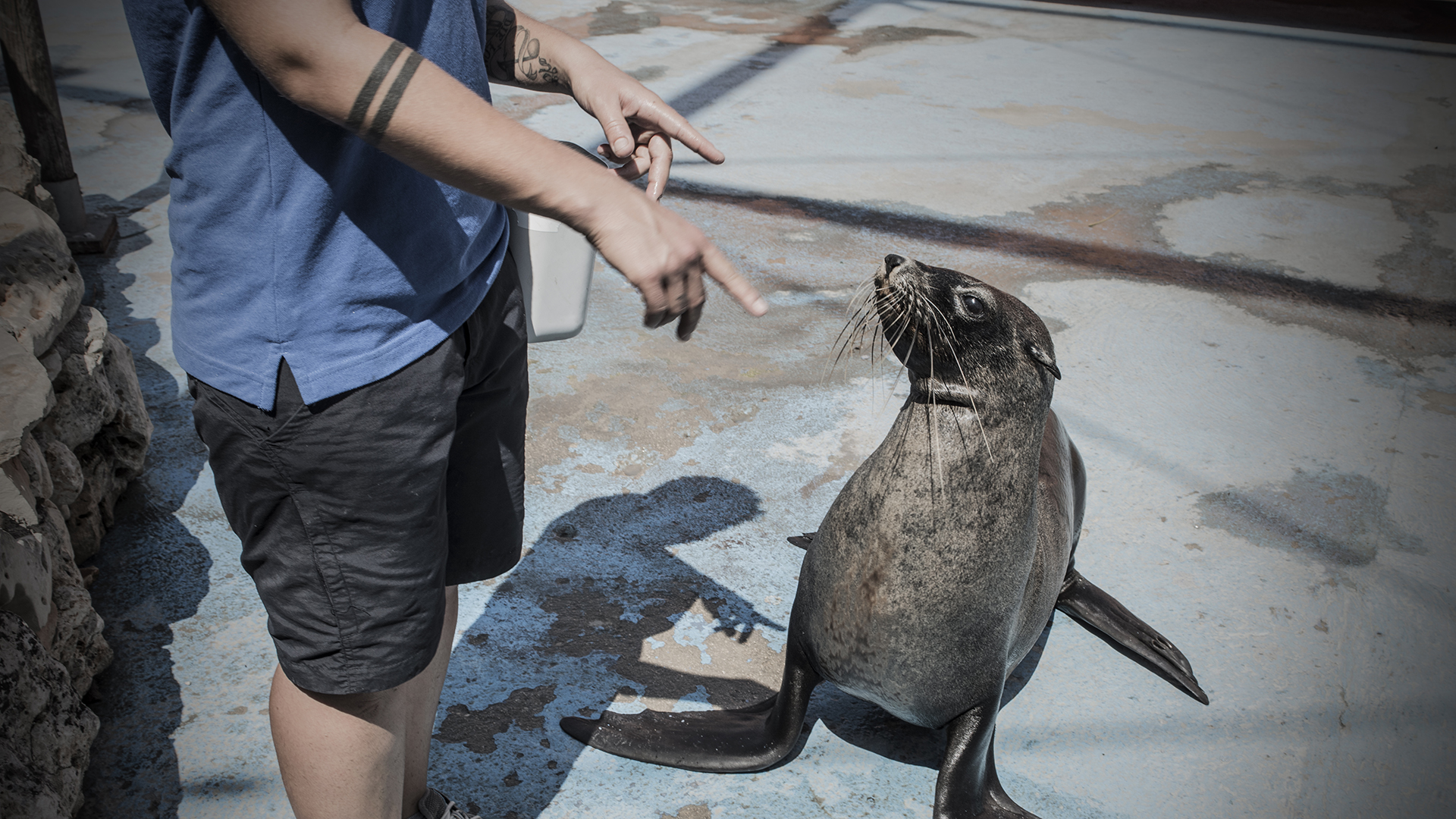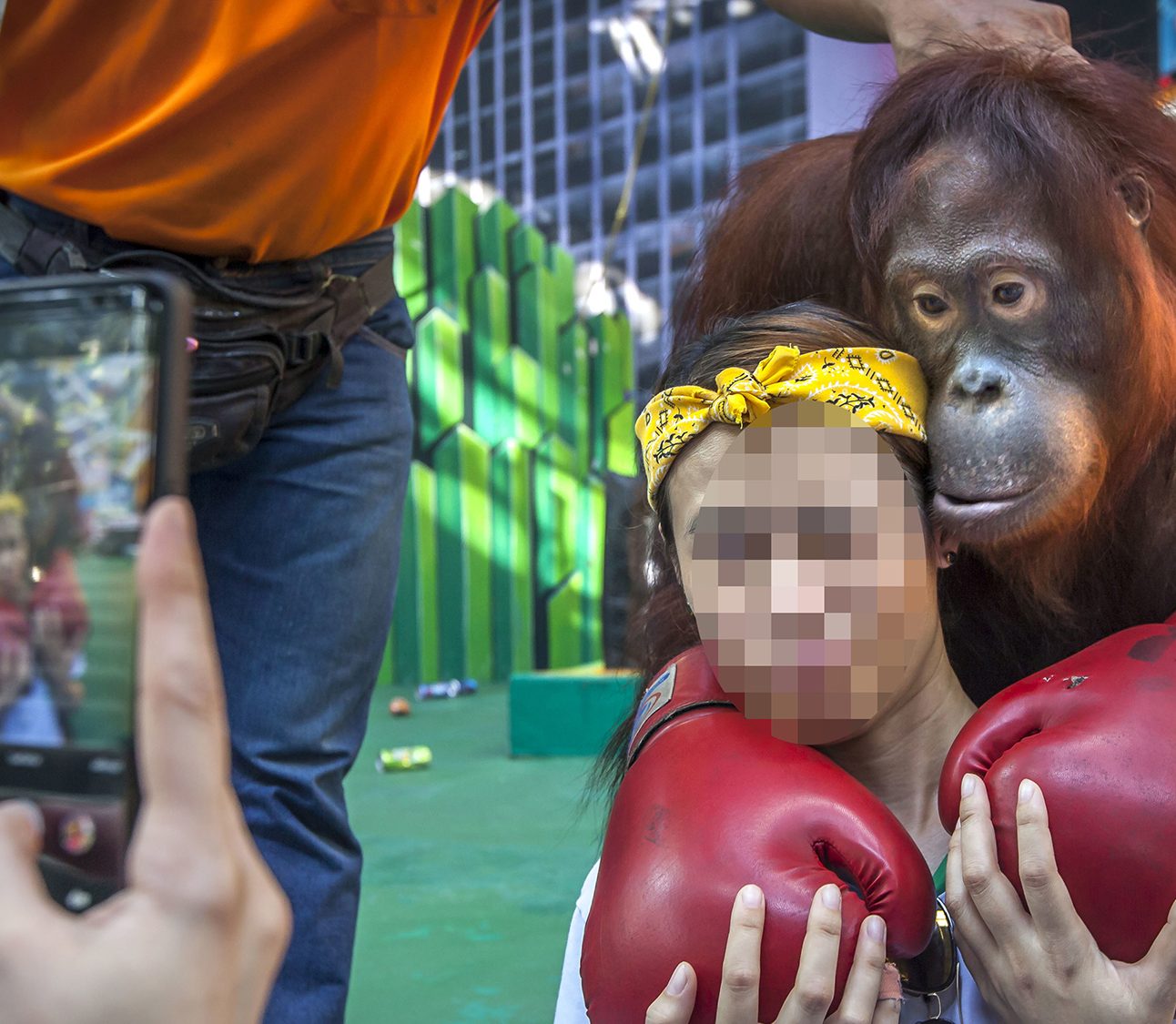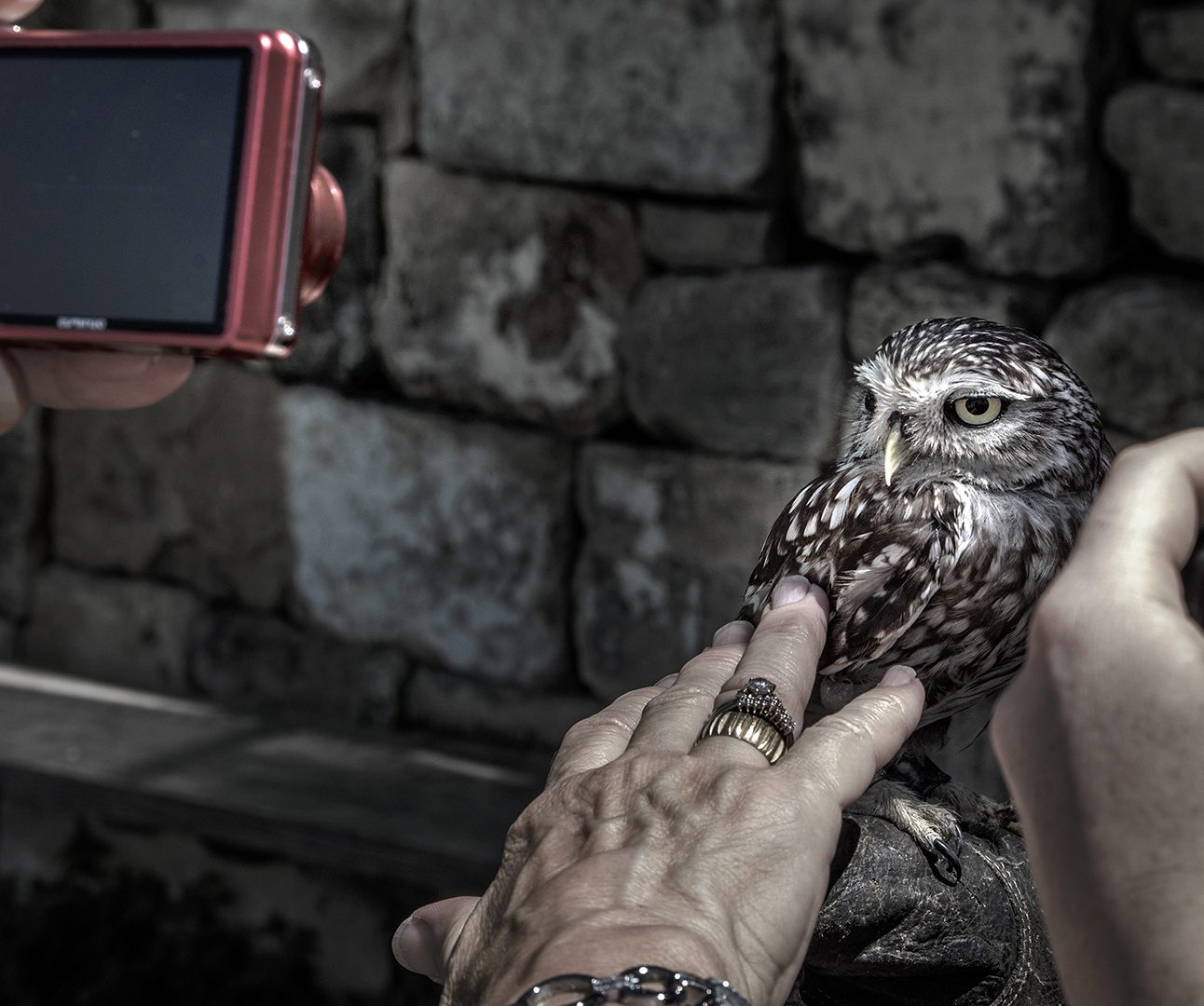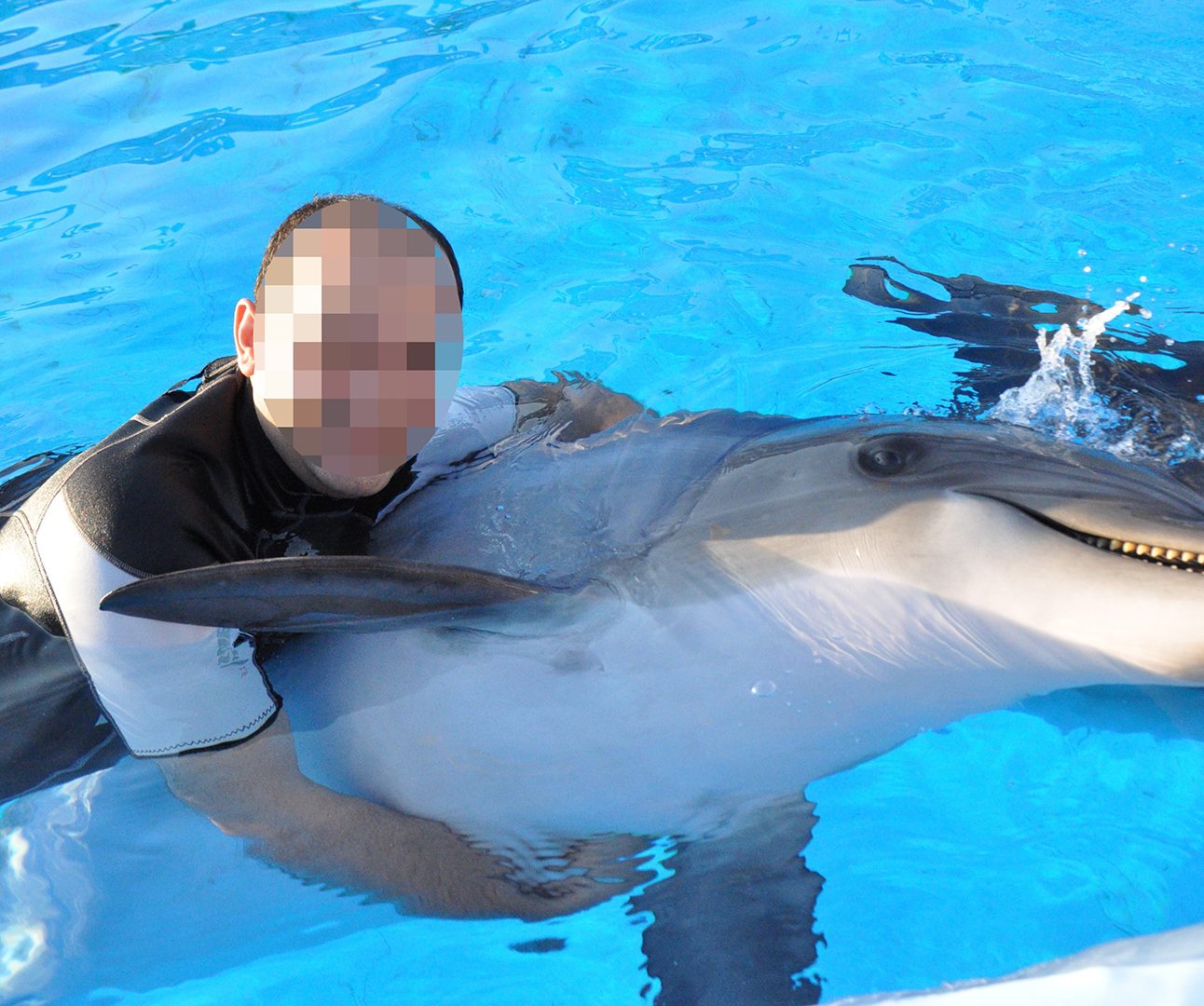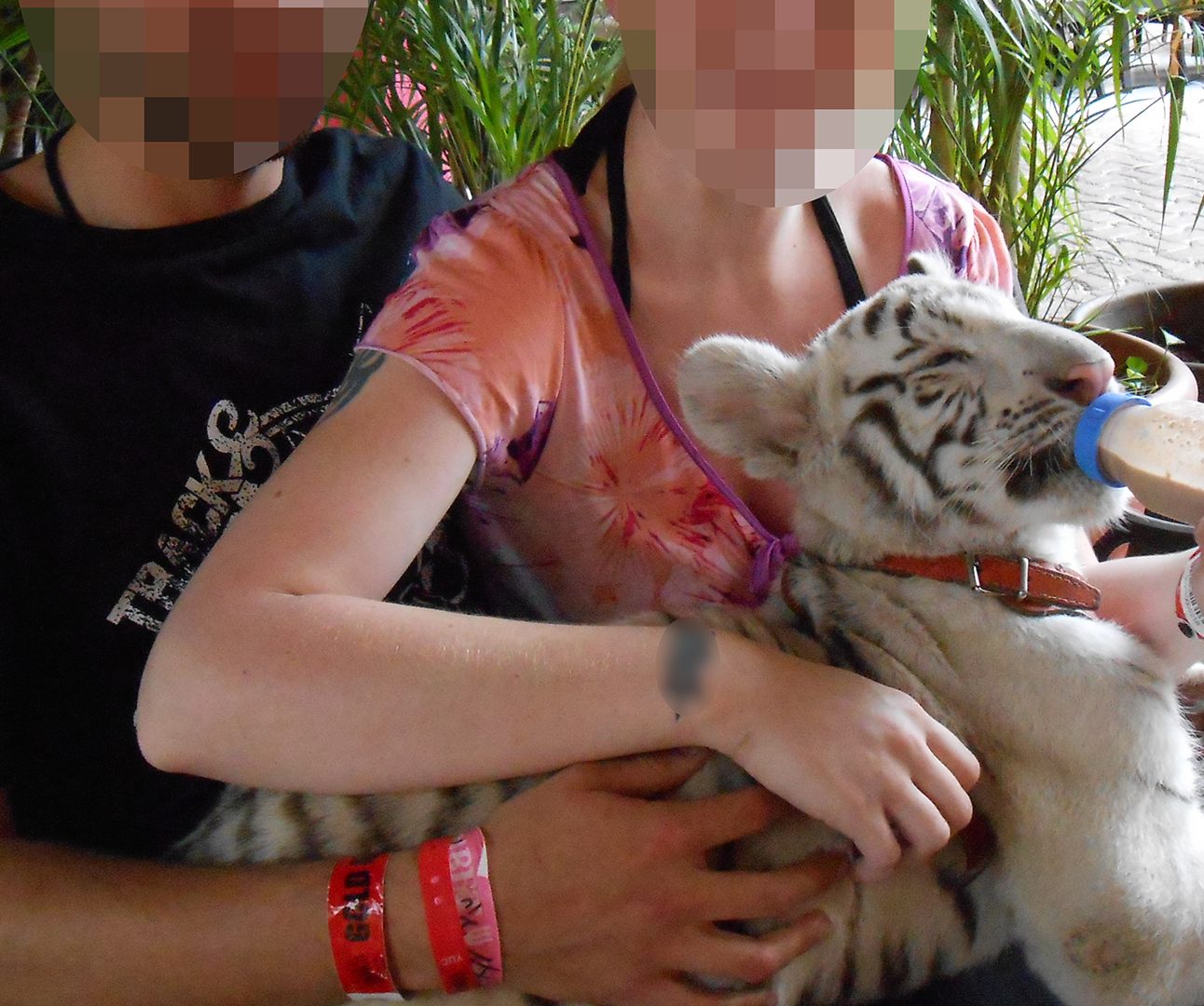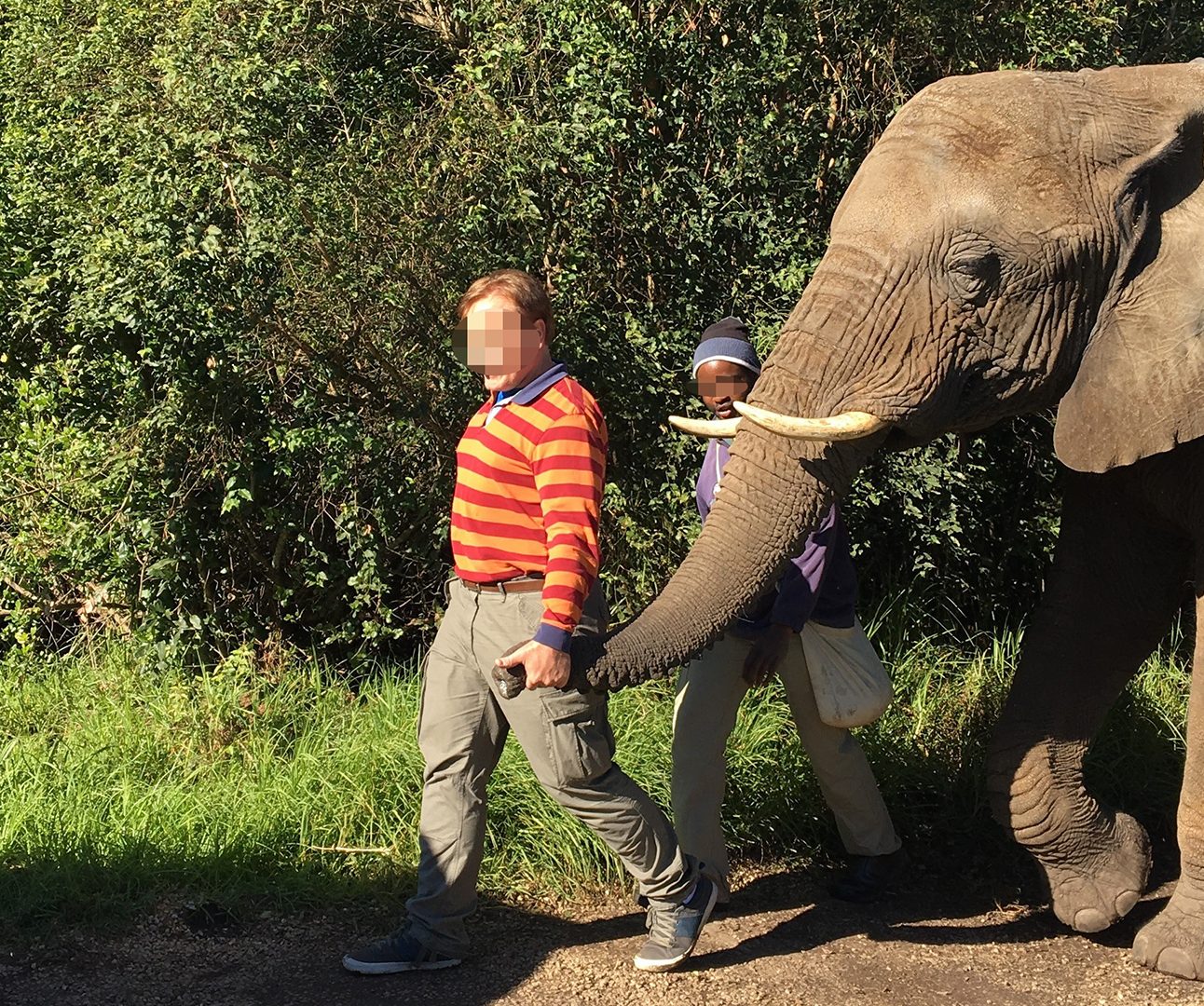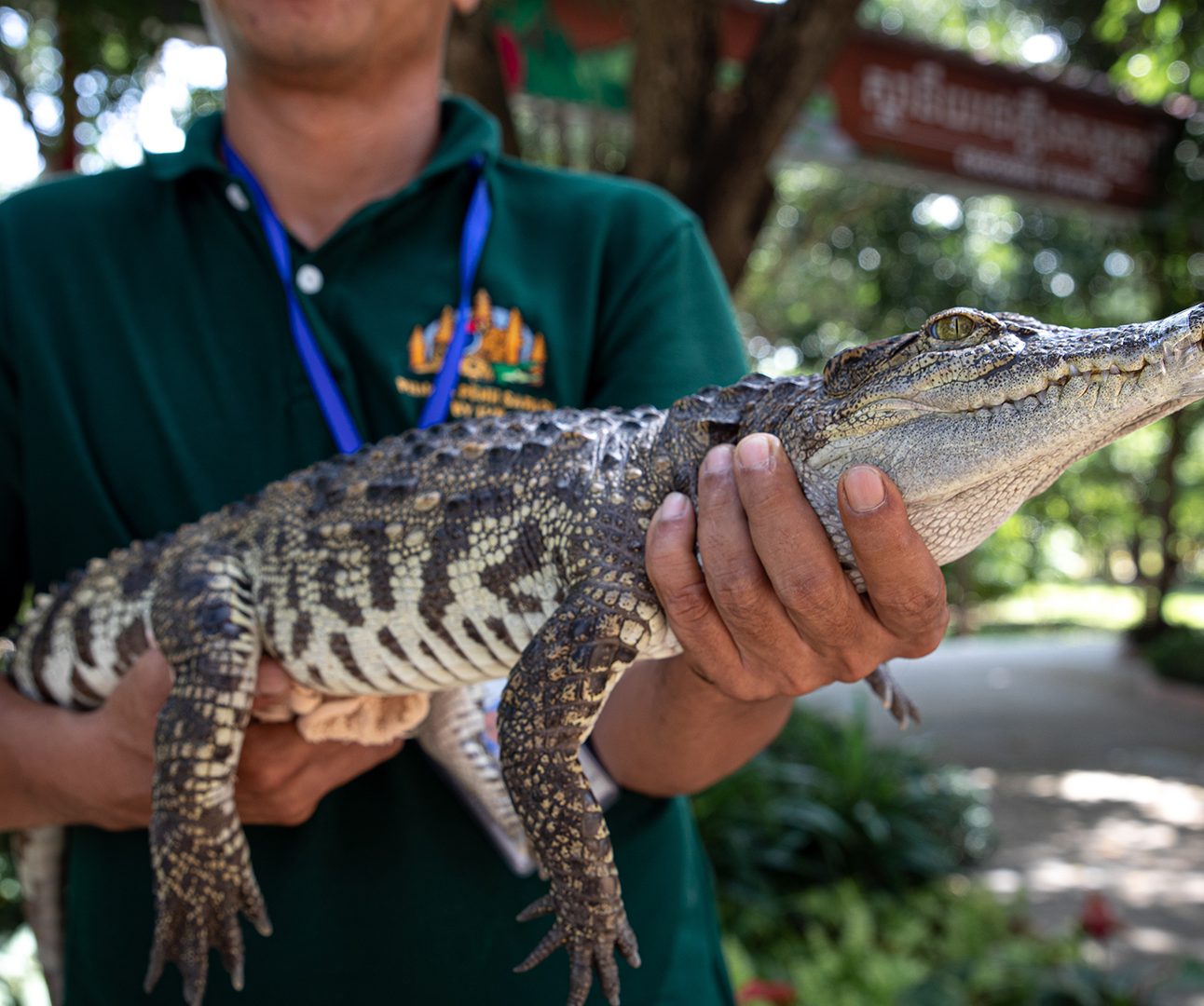ANIMAL WELFARE
Repeated handling and the close proximity to humans can be extremely stressful to animals. Interaction activities often involve huge crowds of people and high levels of noise, with animals passed from person to person throughout the day, every day.
Many animals may endure cruel treatment or training before, during, and after their use in interaction activities. They are often transported over large distances, in small cages, subjected to extreme temperatures, and frequently live in appalling conditions. Animals may also be tethered, chained or even physically mutilated to enable easier handling.
The futures of many animals involved in interaction activities can be uncertain and, when they are no longer cute, charismatic or easy to handle, may end up in appalling captive facilities, travelling circuses, or killed.
RISKS TO THE PUBLIC
The risks posed to people from contact with captive wild animals must never be underestimated. Whether wild-caught, captive-born, juvenile, adult, male or female, wild animals are naturally unpredictable and potentially dangerous. That means they often pose a real risk to anyone who comes into contact with them. There have been numerous incidents where direct animal contact has resulted in human injury or death.
Many animals can harbour zoonotic diseases that are transmissible to humans and which can result in illness and even death. Often people are not informed of the potential risks when taking part in animal interaction activities.
Although many captive facilities do not actively encourage public contact, it may still occur due to lax security, poorly designed or maintained fencing or lack of protective stand-off barriers. There have been cases where people have been injured, some seriously, after leaning into enclosures or reaching through fencing to touch or photograph animals.

